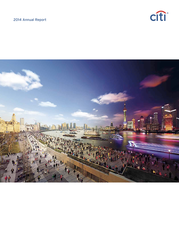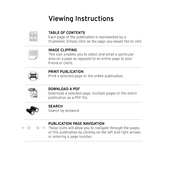Description
SPONSORED STATEMENT
on the need to improve visibility, control
and efficiency. Companies across a wide
range of sectors are increasingly seeking
to centralise and manage trade and other
flows in the Middle East, North Africa,
Sub-Saharan Africa and even Asia from
a single location, with the United Arab
Emirates (UAE) proving an increasingly
popular choice.
Historically, the diverse economic,
regulatory and political environment in
the Middle East and Africa has meant
that many companies managed operations
and treasury on a country-by-country
basis. However, as companies expand
their operations many are recognising the
benefits of centralisation of functions such
as sales, procurement and finance in a
single location. Companies can establish a
centre for re-invoicing in order to improve
visibility and control and keep liquidity
out of countries that have regulations or
FX controls that limit their flexibility,
for example.
Moreover, the emphasis on revenue growth is prompting increased adoption of sales and distributor finance, which frees up customer credit lines (potentially facilitating increased sales), and supply chain finance (SCF), which helps to build sustainable supply chains. Structures such as these require the creation of a centralised hub if they are to work effectively. One notable recent implementation of SCF has been by Etihad Airways, which wanted to strengthen its supply chain while achieving process benefits, such as automation of invoices. It also aimed to improve its cashflow and working capital. It decided to implement a SCF solution for key suppliers globally that would enable them to receive early payment for their receivables and access low cost finance. Etihad Airways’ SCF programme – one of the first in the Middle East and the first for an airline outside the US – has accelerated suppliers’ cashflow and boosted their balance sheets.
Although Etihad Airways made the decision to implement a SCF solution independently, the project is in line with the Abu Dhabi government’s 2030 Vision to improve access to finance for suppliers. As well as helping to grow sales and build stronger supplier relationships, the drive to provide alternative sources of finance to distributors and suppliers is partly driven by changes in the banking sector. The introduction of Basel III, which encourages a focus on risk-weighted assets, is reducing banks’ willingness to lend over the long-term through the project finance market, for example. Shortterm assets, such as those associated with trade, are treated more favourably by Basel III.
At the same time, the increasing size of many SCF programmes is encouraging greater use of multi-bank securitisation and asset distribution participation from other banks. By distributing SCF assets, with both relationship and nonrelationship banks, liquidity is enhanced and pricing optimised. Yusuf Ali Khan, Citi INCREASED SOUTH-SOUTH FLOWS ARE PROMPTING A FOCUS ON THE NEED TO IMPROVE VISIBILITY, CONTROL AND EFFICIENCY. David Aldred, Citi Changes in infrastructure finance In the Middle East, the need for infrastructure investment to overcome a backlog of demand and meet the needs of a growing population is huge. Historically, most infrastructure projects have been funded through a combination of commercial bank financing, coupled with support of European and US export credit agencies (ECAs) and multilateral agencies, which are collectively referred to as official agencies. These bodies’ support remains important and they continue to innovate: in March, UK Export Finance provided cover for an Islamic bond, known as a Sukuk, issued by Dubai’s Emirates Airline to purchase aircraft including the Airbus A380, for example. The Middle East can be divided into two distinct country categories: oil rich (mostly GCC) countries; and non-oil rich states (Egypt, Lebanon, Pakistan). Reliance on official agency-backed financing in the GCC states has largely been focused on the aviation, shipping and telecoms sectors and has declined in recent years.
This is due to increased liquidity as well as fierce competition among banks seeking good quality assets where commercial lending has displaced more structured approaches. Meanwhile, in high-risk countries, such as Egypt and Pakistan, where the demands for infrastructure financing are too large for the local bank market to support, ECA-supported financing is an invaluable tool for public and private sector borrowers. The growing importance of emerging markets in general – and greater SouthSouth flows in particular – is reflected in increasing activity by Asian official agencies. One landmark deal that highlighted this trend was the UAE’s awarding of a contract in 2010 to the Korea Electric Power Corporation to construct the first of four APR1400 nuclear reactors to sell electricity to the Abu Dhabi Water and Electricity Authority. The deal was financed by US$10bn in funding by South Korea’s export financing bank, Export-Import Bank of Korea (Kexim), its largest financing at that time. East Asian (particularly Japanese, Korean and Chinese) construction and engineering firms have also expanded significantly across the Middle East, thanks in part to demand for power plants, refineries, and infrastructure projects and the country’s official agencies have extend short-, medium- and longterm financing to support them. In the shipbuilding sector, where there is considerable Middle Eastern demand for energy transport vessels, Asian official agencies, including the Japan Bank for International Cooperation (JBIC), Nippon Export and Investment Insurance (Nexi), Korea Trade Insurance Corporation (K-Sure), Kexim and China’s China Export & Credit Insurance Corporation (Sinosure) are thought to be considering supporting orders from the Middle East for vessels from shipyards in their countries in the future. JULY/AUGUST 2015 | 25 .
Moreover, the emphasis on revenue growth is prompting increased adoption of sales and distributor finance, which frees up customer credit lines (potentially facilitating increased sales), and supply chain finance (SCF), which helps to build sustainable supply chains. Structures such as these require the creation of a centralised hub if they are to work effectively. One notable recent implementation of SCF has been by Etihad Airways, which wanted to strengthen its supply chain while achieving process benefits, such as automation of invoices. It also aimed to improve its cashflow and working capital. It decided to implement a SCF solution for key suppliers globally that would enable them to receive early payment for their receivables and access low cost finance. Etihad Airways’ SCF programme – one of the first in the Middle East and the first for an airline outside the US – has accelerated suppliers’ cashflow and boosted their balance sheets.
Although Etihad Airways made the decision to implement a SCF solution independently, the project is in line with the Abu Dhabi government’s 2030 Vision to improve access to finance for suppliers. As well as helping to grow sales and build stronger supplier relationships, the drive to provide alternative sources of finance to distributors and suppliers is partly driven by changes in the banking sector. The introduction of Basel III, which encourages a focus on risk-weighted assets, is reducing banks’ willingness to lend over the long-term through the project finance market, for example. Shortterm assets, such as those associated with trade, are treated more favourably by Basel III.
At the same time, the increasing size of many SCF programmes is encouraging greater use of multi-bank securitisation and asset distribution participation from other banks. By distributing SCF assets, with both relationship and nonrelationship banks, liquidity is enhanced and pricing optimised. Yusuf Ali Khan, Citi INCREASED SOUTH-SOUTH FLOWS ARE PROMPTING A FOCUS ON THE NEED TO IMPROVE VISIBILITY, CONTROL AND EFFICIENCY. David Aldred, Citi Changes in infrastructure finance In the Middle East, the need for infrastructure investment to overcome a backlog of demand and meet the needs of a growing population is huge. Historically, most infrastructure projects have been funded through a combination of commercial bank financing, coupled with support of European and US export credit agencies (ECAs) and multilateral agencies, which are collectively referred to as official agencies. These bodies’ support remains important and they continue to innovate: in March, UK Export Finance provided cover for an Islamic bond, known as a Sukuk, issued by Dubai’s Emirates Airline to purchase aircraft including the Airbus A380, for example. The Middle East can be divided into two distinct country categories: oil rich (mostly GCC) countries; and non-oil rich states (Egypt, Lebanon, Pakistan). Reliance on official agency-backed financing in the GCC states has largely been focused on the aviation, shipping and telecoms sectors and has declined in recent years.
This is due to increased liquidity as well as fierce competition among banks seeking good quality assets where commercial lending has displaced more structured approaches. Meanwhile, in high-risk countries, such as Egypt and Pakistan, where the demands for infrastructure financing are too large for the local bank market to support, ECA-supported financing is an invaluable tool for public and private sector borrowers. The growing importance of emerging markets in general – and greater SouthSouth flows in particular – is reflected in increasing activity by Asian official agencies. One landmark deal that highlighted this trend was the UAE’s awarding of a contract in 2010 to the Korea Electric Power Corporation to construct the first of four APR1400 nuclear reactors to sell electricity to the Abu Dhabi Water and Electricity Authority. The deal was financed by US$10bn in funding by South Korea’s export financing bank, Export-Import Bank of Korea (Kexim), its largest financing at that time. East Asian (particularly Japanese, Korean and Chinese) construction and engineering firms have also expanded significantly across the Middle East, thanks in part to demand for power plants, refineries, and infrastructure projects and the country’s official agencies have extend short-, medium- and longterm financing to support them. In the shipbuilding sector, where there is considerable Middle Eastern demand for energy transport vessels, Asian official agencies, including the Japan Bank for International Cooperation (JBIC), Nippon Export and Investment Insurance (Nexi), Korea Trade Insurance Corporation (K-Sure), Kexim and China’s China Export & Credit Insurance Corporation (Sinosure) are thought to be considering supporting orders from the Middle East for vessels from shipyards in their countries in the future. JULY/AUGUST 2015 | 25 .













